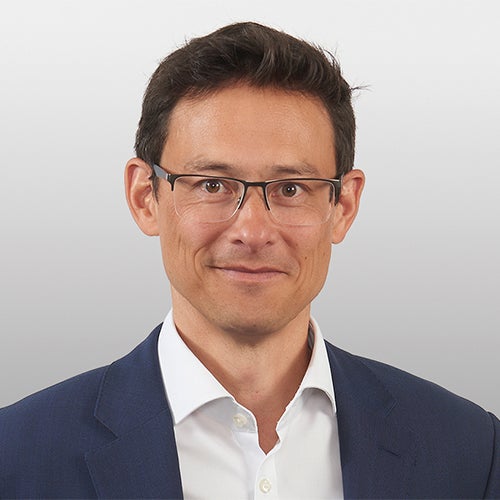Three pillars: philosophy, process and culture

In the Henley Asia & EM team we believe that the key ingredients for success in active fund management are philosophy, process and culture. Discussions of philosophy and process are well-trodden ground and are not the subject of this blog. Culture is a less-discussed feature, and clearly there are elements of ‘culture’ which intertwine with ‘process’, but we think it is necessary to understand how a team operates to get comfort on whether historic performance is repeatable. We also think it’s a really interesting topic to explore.
What do we mean by team culture?
The typical model of how investment teams are set up is a fund manager supported by a team of analysts. If the team run multiple funds, there may be a few fund managers supported by more analysts. This model has the advantage of being simple to understand, and it’s arguably a positive that the fund manager has clear authority to direct the analysts to work on stocks which he or she thinks might be good ideas. The model assumes that the roles of fund manager and analyst are quite distinct – the analysts ‘crunch the numbers’ on individual companies, while the fund manager pontificates on how the overall portfolio might be best positioned for the macro environment he or she expects.
That’s not the model we operate. We see downsides in the model outlined above, namely that:
- The job of fund manager and analyst is very similar, especially if the process is bottom-up; the fund manager is not primarily trying to set the portfolio up for a macro outcome, he or she is mostly trying to fill the portfolio with the stocks with the highest probability-weighted upside.
- ‘Crunching the numbers’ is very important to understand the company. If a fund manager completely delegates this to analysts, and buys the stock, then there won’t be quite the required level of conviction to be able to hold that stock through difficult times, or indeed to buy more when the discount to fair value widens.
- To be a great analyst you need to be able to compare the stock you are looking at to the other options in front of the fund manager. Some of those may be in different sectors and in different countries, yet most analysts will be confined to their particular sector or country.
- The hierarchy of the traditional set-up described above can lead to problems. Fund managers depend on maintaining a fine balance between confidence and humility – they need confidence to believe they can beat the market, and yet they need humility (and realism) to recognise that they will get a large proportion of their decisions wrong (even if they are really good fund managers). Having a team of dedicated analysts to support you can upset that balance, and if it is not carefully managed then the analysts can turn into a band of “yes-people” who just say what their leader wants to hear.
- Another difficulty of the traditional model is making the transition from analyst to fund manager – the fund manager might not be incentivised to enable this transition and the analyst may not have the generalist experience in order to make it. This in turn can lead to “key person risk” if nobody else in the team is equipped to stand in for the one fund manager.
So how do we operate?
Our model is to combine the roles of fund manager and analyst as soon as possible. In our team we have 10 investment professionals, 8 of whom are managing portfolios. If there are no suitable portfolios available for people to manage, we ask them to run paper portfolios with exactly the same mandate as the real funds.
This leads to much more precision in recommendations – instead of just a ‘Buy’ or a ‘Sell’ or perhaps a ‘Hold’, or ‘I prefer stock X to stock Y’, the analyst/FM can demonstrate in their portfolio that they recommend owning 2.5% in stock X, 1.5% in stock Y, and nothing at all in stock Z.
This approach makes the job of ‘analyst’ much more rewarding, in our view. It takes away some of the frustrations of not seeing your recommendations acted upon, and the associated frustration of seeing stocks you have recommended go up a lot, but no-one has bought them!
Importantly it also means that a less experienced colleague is more able to challenge the views of a more experienced colleague – inevitably there are portfolio differences between different colleagues and in effect everyone is saying to everyone else “this is how I think you should be managing your portfolio”. The problem of “yes-people” goes away and you end up with much less ‘key person risk’.
One of the challenges of our approach is to keep people on a similar track such that the team is still a team, rather than just a bunch of fund managers who pay no attention to each other.
Company shortlist
This is where our company shortlist comes in. The team manage a shortlist of approximately 100-120 stocks and every portfolio managed in the team is constructed from the stocks on that shortlist. Everyone can propose stocks to add to the shortlist and while there is no voting system, every proposal must ‘go through the process’. Essentially that means a Phase 1 report, a Phase 2 report and a team meeting to discuss the stock, where everyone can voice their questions and concerns. A Phase 1 report needs to win support from a seconder for the idea to move to Phase 2. Usually, if the proposer thinks the stock is a buy after the process is complete, then at least one other colleague will agree (typically of course the seconder is likely to agree); but if that doesn’t happen the proposer can still add the stock to the company shortlist and buy the stock in his or her portfolio. There is no right of veto.
So, the company shortlist is not a list which the team have jointly approved as possible buys; it is a shortlist of companies which have gone through the team’s process and at least one person in the team has bought. The final tweak to the system, that keeps everyone working cohesively, is that each fund manager is limited to five ‘solo stocks’ i.e. stocks which no-one else owns.
The company shortlist contains 100-120 stocks and each portfolio contains somewhere between 50 and 80 stocks. Each portfolio is picked from the same company shortlist, and not every stock on the shortlist is eligible for every portfolio due to differing benchmarks. The system results in a high degree of overlap between portfolios, ensuring a team approach, but at the same time it preserves the autonomy and accountability which individual fund managers love.
Conclusion
We believe that using the structure described above is one of the reasons why we’ve managed to deliver good outcomes for clients over the last decade or more. Our culture of challenge is designed to give each individual the autonomy and accountability they thrive on, but it also harnesses the power of the team. There is also the evident benefit of having several people looking at a stock, with a group likely to identify more of the opportunities and risks than a single person. We believe that alongside philosophy and process, understanding team culture is a key part of understanding any investment team.



